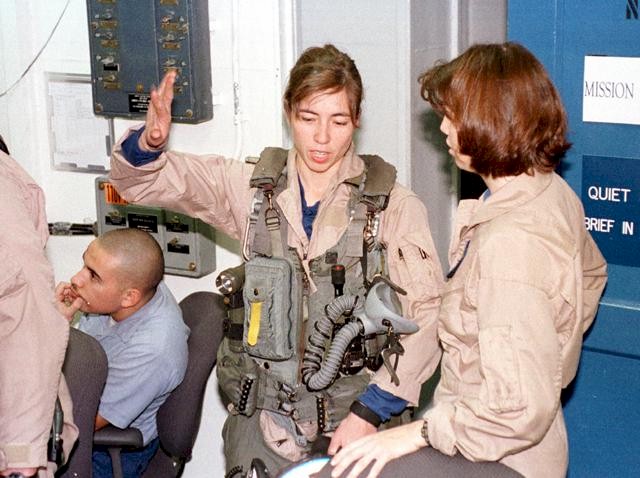Introduction
Operational Obstetrics & Gynecology
 In 1993, while in the Navy Reserve, I published a manual for the Navy,
"Operational Obstetrics & Gynecology." It was based primarily on my own personal
experiences and perspectives, and focused on the needs of the sea-going
population. In 1993, while in the Navy Reserve, I published a manual for the Navy,
"Operational Obstetrics & Gynecology." It was based primarily on my own personal
experiences and perspectives, and focused on the needs of the sea-going
population.
In 2000, I wrote the 2nd Edition, incorporating several changes:
-
I expanded the applicability of the manual to the other
areas of military operations (Air, Sea and Land).
-
I added several chapters not covered in the 1st Edition.
-
I incorporated changes and additions from operationally
experienced medical providers from the Army, Navy, Marine Corps, Air Force and
Coast Guard.
Although I am no longer in the Navy, I continue to teach the healthcare of
women in military settings at the Uniformed Services University of the Health
Sciences (Armed Forces Medical School) in Bethesda, Maryland, where I am an
Adjunct Associate Professor, and at the Naval Undersea Medical Institute in
Groton, Connecticut. There is an ongoing need for up-to-date information in this
area.
This most recent version, Military Obstetrics and Gynecology, expands further
both the information and guidance on providing hands-on care to women in
military settings.
 Military
Medicine Military
Medicine
Providing health care in military settings is in some ways similar to
civilian settings, and in some ways different.
In civilian settings, the primary responsibility is to the patient, with
secondary concerns for the insurance company, employer and family. In military
settings, the primary responsibility is to the Command.
In most cases, the interests of the Command and the interests of the patient
are the same, particularly in a garrison setting. In a deployed setting,
divergence of interest may occasionally arise, creating challenges for the
military health care provider.
Military medicine also differs from civilian medicine in three other
fundamental ways:
-
Medical providers are isolated.
-
Medical resources are limited.
-
Operational circumstances may influence the provision of
medical care.
It is because of these differences that clinical problems in an operational
setting may be treated differently than the same clinical problem in a civilian
setting. The principles of treatment are the same: the application of treatment
may be different.
 Women’s
Health Care Women’s
Health Care
For the most part, women's health care needs are the same as men's health
care needs. Women develop coughs, colds, stomach upsets, contusions, abrasions,
and fractures. They need preventative care and immunizations.
However, some of their health care needs are different:
-
Women have some unique gynecologic and obstetric needs.
-
Women may have different vulnerabilities to certain
diseases or injuries.
-
Women may use health care services differently than men.
Women in the Military
Military women are a unique group.
They are a generally young, healthy population, pre-screened for most common,
chronic diseases. They are physically fit and engage in regular exercise.
Women in the military are, as a group, younger than their male counterparts,
are of lower rank, sustain more stress fractures, and utilize health care
services twice as often. Even after excluding female-specific reasons (OB, GYN),
they still use health care services more often. In this regard, they are similar
to civilian women who also use health care services more often. In most studies,
like their civilian counterparts, although they use health care services more
often, they are generally less satisfied with those services than men.
Women in the military come from many backgrounds. Among Navy recruits, nearly
half have been victims of physical domestic abuse prior to entry into the
service, a figure similar to their male counterparts.
 As
a group, women have: As
a group, women have:
-
More self-reported chronic conditions and all acute
conditions except injuries
-
Higher illness rates
-
More days of illness and disability
-
10% more acute conditions, particularly infections,
respiratory problems and digestive conditions
-
Poorer vision
-
Poorer dental status
-
Better hearing
-
More genitourinary problems
-
Less chronic illness leading to death
-
Lower death rates
About one-third of the OB-GYN health care visits made by military women are
for routine care. Most of the remaining visits are for:
Purpose of this Manual
This manual is designed to assist those who treat women with gynecologic
problems and offer guidance for the continuing care of these women, particularly
in isolated settings where gynecologic consultation is not readily available.
The manual is not all-inclusive and is not intended to replace good clinical
judgment nor in-depth textbooks, which should be consulted whenever appropriate.
As in most areas of medicine, there may be more than one way to deal with any
particular gynecologic problem. For simplicity, one basic approach is usually
given here. There are often other approaches that will give very good or
superior results. |

 In 1993, while in the Navy Reserve, I published a manual for the Navy,
"Operational Obstetrics & Gynecology." It was based primarily on my own personal
experiences and perspectives, and focused on the needs of the sea-going
population.
In 1993, while in the Navy Reserve, I published a manual for the Navy,
"Operational Obstetrics & Gynecology." It was based primarily on my own personal
experiences and perspectives, and focused on the needs of the sea-going
population.

